Gravois Avenue & Meramec Street
South St. Louis, MO
This is a rather rundown intersection in the Bevo Mill neighborhood, but if you look through the grime, there’s some interesting visual history of when St. Louis (like other Rust Belt cities) actually produced goods, and those industries dictated the transportation, housing and society of the neighborhoods they resided in.
While stuck at this stop light contemplating these fanciful thoughts, I noticed the two buildings above had Hiliker For Sale signs. The building on the left is a 2-family flat from 1915, and next door is a 4-family from 1915.
And the one-story industrial building next to it, from 1918, is also for sale by the same company.
Even around the corner, on Meramec, the 4-family from 1915 is also for sale.
Which means the entire block bound by pink in the above aerial map (courtesy of bing.com) is for sale by the same agent, though info about these buildings are not on the Hiliker site. Included in this full city block is the jewel of the lot…
…the 9-story-total factory from 1928 which was formerly the Graham Paper Company. It sits majestically at the top of the viaduct, and in the late 20th century it served as a storage warehouse. I remember idle talk in the early 20s of it becoming loft apartments, but obviously that never happened.
All of these properties currently for sale are listed in city records as being owned by 4230 Gravois LLC, c/o Imagine Schools, which begs the question: did this organization buy all these properties with the intent of creating a campus, then changed their mind?
The Graham Paper Company building is a gorgeous example of dignified industry, which was par for the course for the 19th-into-20th century, and I admire how they tucked this large complex into a block already populated with multi-family housing.
What will become of this block? Must the buildings be purchased as a whole, or will “the whole” turn off any but the deepest pockets? It’s easy (but not desirable) for potential developers to dismiss the residential and remuddled one-story warehouse as demolition fodder, but the Graham complex cannot be denied. It’s a strange and intriguing plot of land, and the possibilities for a new use are plentiful…and worrisome.
If anyone has information on what’s happening with this block (including – and most especially – history of Graham Paper Company), please do share.


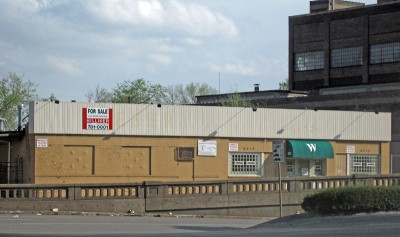
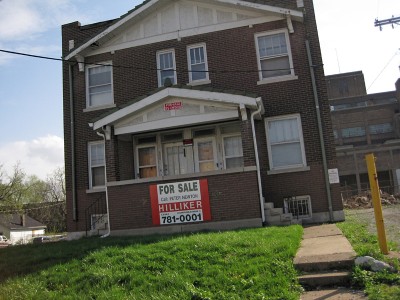
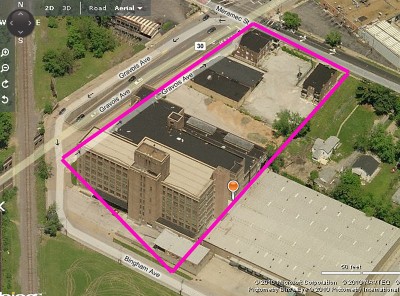
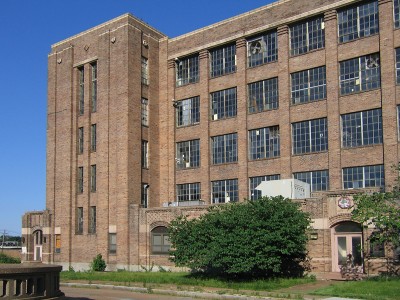
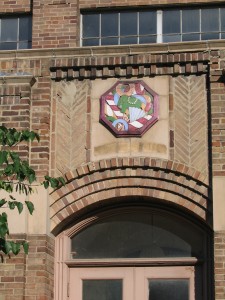
“If anyone has information on what’s happening with this block (including – and most especially – history of Graham Paper Company), please do share.” ~Toby Weiss
If still interested, a Wikipedia article has recently been posted on the Graham Paper Company. Some of the history of the company has is available:
https://en.wikipedia.org/wiki/Graham_Paper_Company
This building and lot of buildings will be restored and transformed into a U-Haul Moving and Storage facility. This will be a similar restoration as the old Globe Drug Store building downtown off Tucker Blvd is receiving. This process will certainly help to clean up the appearance of the entire block.
I grew up in this neighborhood in the forties and fifties. For us, the building was the Chase Candy Company, and we’d ride down Bingham on our bikes and hang out in the parking lot. Occasionally, some of the workers would throw candy out the windows to us. We took care to catch the bags cleanly so there’d be no tell-tale splatter left on the lot. The Chase Candy company was one of the old industrial monuments on Bingham, along with the Koppers Mfg. Co. (antedating the Brown Shoe Company) and, further east, the Pomona Pump Company. Bingham was the boundary line street between areas zoned industrial and areas zoned residential.
I just went into the factory today. Not too scary. No one around. Interesting graffiti in some places. Didn’t get to look at all floors (flashlight died) but still would be great if something was done with the building.
Writing this in October 2012
And Deanna said its been badly trashed on the outside and in side too. I have a few photos of it in my scraps on my Web page but I dare not go into the darkness as I do not know what lurks there.
I may go into the darker areas when I am geared for it and bring friends I know I can relie on in a pinch incase of danger.
Writing this in January, 2012…….the entire block is now such an eyesore. It has become a dumping area & is in such disrepair with homeless &wildlife taking over the interior which is totally trashed. It is a great location for industrial businesses -I wish someone would buy it to bring jobs to the city.
Imagine school owns it now but doesn’t take care of the property – a real shame for the neighborhood.
Oh and Western Bowl is now a Post Office sorting faciltity and Bailey Farm Dairy is now a Bosnian restaurant – Grbics….Great food.
A shame the writer had to start off with “This is a rather rundown intersection in the Bevo Mill neighborhood, but if you look through the grime”…….
stumbled on this site looking for Bailey Farm Dairy items.. I lived in Bevo, and it was always a big treat to go to BFD with the grandparents for frozen custard.
I remember playing CYC soccer and baseball games at the field across from the old Paper Factory, which we called “Chaddeyson” or something like that… I was never sure what that building with the athletic fields was- seemed to be some sort of union hall or something?
Is that train line still operating next to the factory?
I ask bc it appears the line cuts through some very visible areas of South City and could be used for light rail possibly?
Any details on this?
*gasp!* I LOVE this factory building!!! i discovered it a few years ago driving around south city. I wish i could buy it and turn it back into a chocolate factory and sell candy with gold tickets so i could give tours!!!
The National Candy Co. building sits at the western boundary of the Dutchtown West neighborhood. As a boy, actor Vincent Price was known as “The Candy Kid”; his father was president of the National Candy Co.
I lived in that area from 1962-1965. It was a clean, safe, civilized, functioning city neighbohood. Houses did not stand vacant for years and factory buildings were not vandalized, as they are today. Western Bowl was two blocks east of that building. Its opening in July 1962 was marked by a stagecoach parade through South St. Louis with a four-horse team and Western Bowl cowgirls. Ceremonies that day featured popular TV personality Charlotte Peters. For years afterward, Western Bowl teemed with activity and patrons at its bowling lanes and restaurants.
Bailey Farm Dairy — with its popular ice cream fountain — was one block north on Keokuk St. at Meramec St. The Colonial Baking Company was one block south on Gravois Ave. Factory buildings that are now silent were operating along Gustine Ave. south of Bingham Ave. My mother’s cousin grew up in a frame house in the 3900 block of Meramec St. She remembered seeing a farm near Bingham and Gustine Aves. when she was a girl. Aerial photographs taken for the Missouri Pacific Railroad Co. in the 1940s-1950s show large areas of vacant land around Bingham and Gustine Aves. and on the site where Resurrection Catholic Church was built.
Can I ask where you got your theme from? I was looking on Yahoo for theme but I found your site instead. Im rather suprised as I dont really bother with blogs but I thought I would give you a comment as I have enjoyed your site. Thank you
That parcel has been for sale for about 3 years. I keep fearing that some jerk will come along and raze everything to the ground and put in a Walgreens, CVS, or a QT. It seems the City can’t see beyond those three in terms of development. Although, I’m glad that the charter school planned for the National Candy building fell through. My personal opinion is that charter schools are part of a concerted effort to dismantle our public schools, both in the City and nationwide. But I digress…Oh, BTB, I think that one of the last Lamella roof structures in STL is currently being demolished down the street. The old Ford dealership and its service shop are being destroyed for a…CVS. The service shop’s arcing roof has/had, if my eyes don’t deceive me, a Lamella structure. Pity. If ya’ want to take a gander, you better hurry. It’s almost gone.
I’m impressed by all three of you. Jeez…
To add to what Michael said:
The National Candy Company, including this factory in St. Louis, and 2 in Chicago was sold to Chase Candy in 1946. An executive at the company was the father of actor Vincent Price, who grew up at 6320 Forsyth (across the street from Givens Hall at WashU). This location is also interesting for the subterranean galleries in the underpass that originally allowed factory workers access to the Gravois streetcar via a stairway.
The Graham Paper Company building was built as a factory by the National Candy Company, hence the polychromatic terra cotta panel depicting candies over the entrance. In 2009, the National Park Service listed the building in the National register of Historic Places. At the time, Imagine was planning to convert the building into a charter school, but those plans have fallen through.